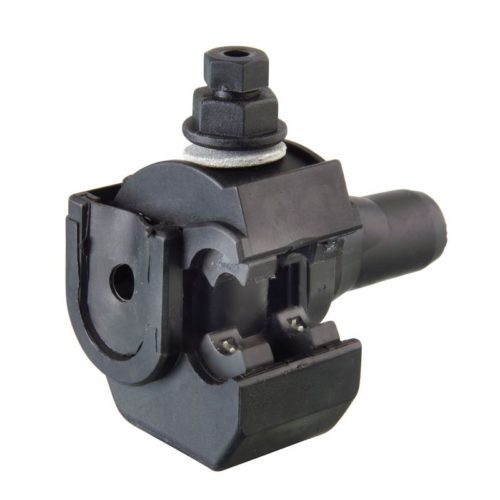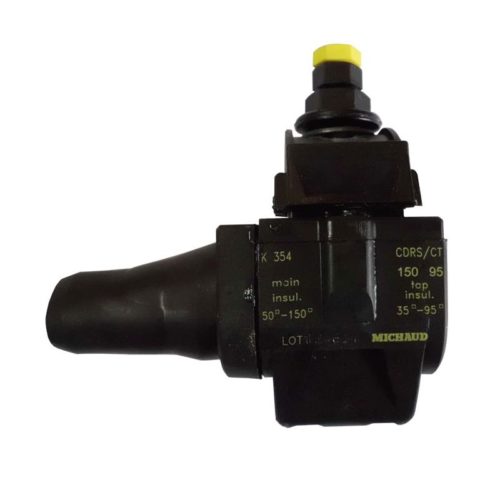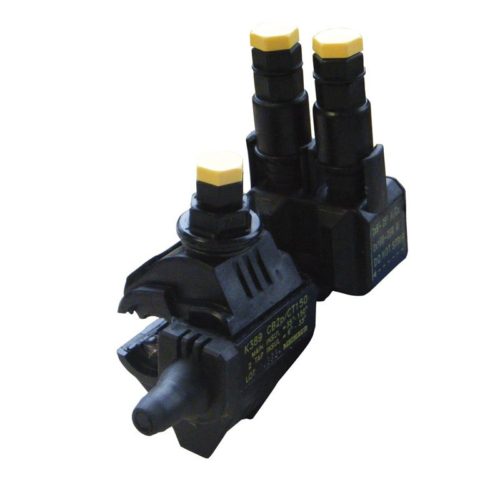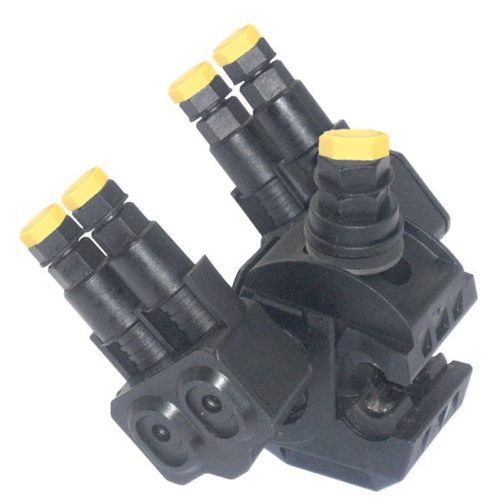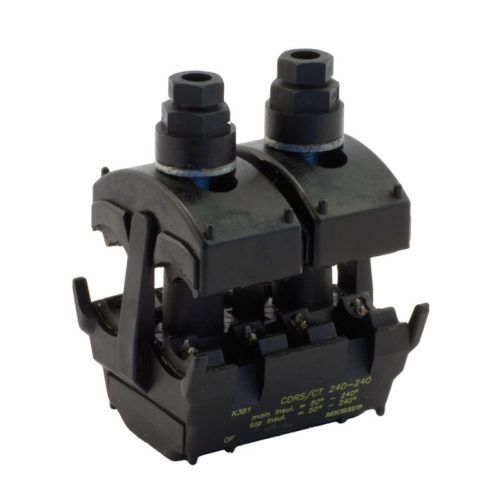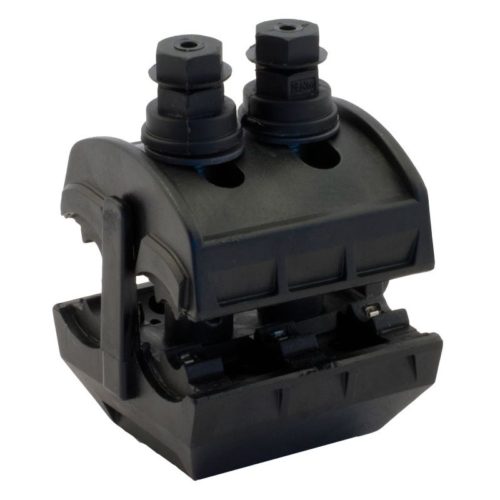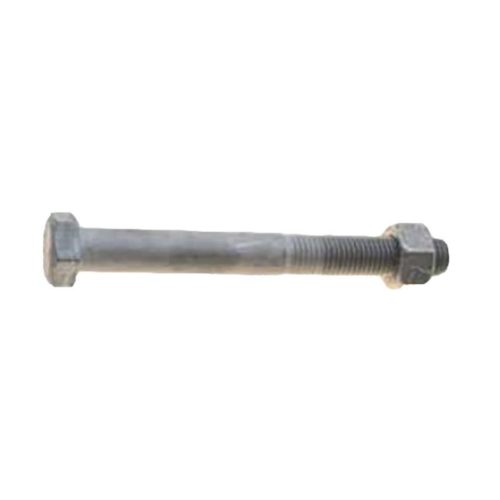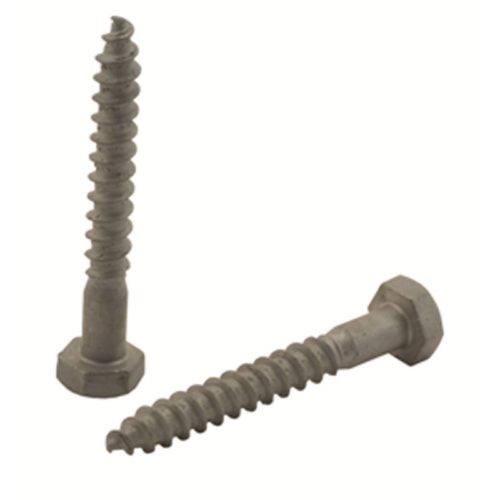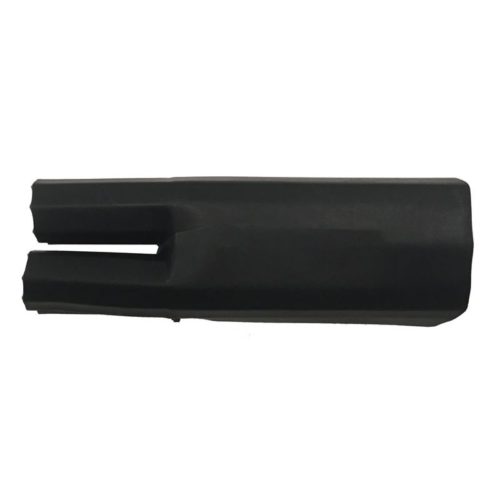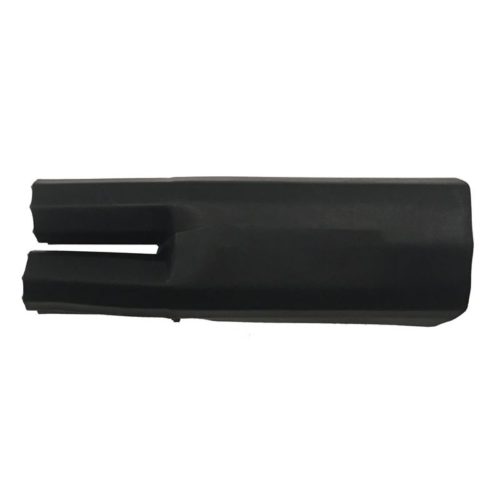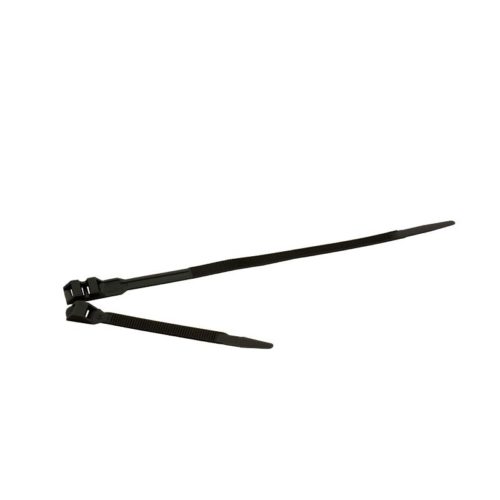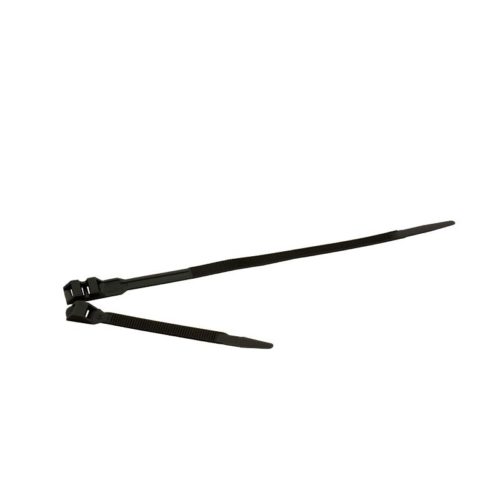-
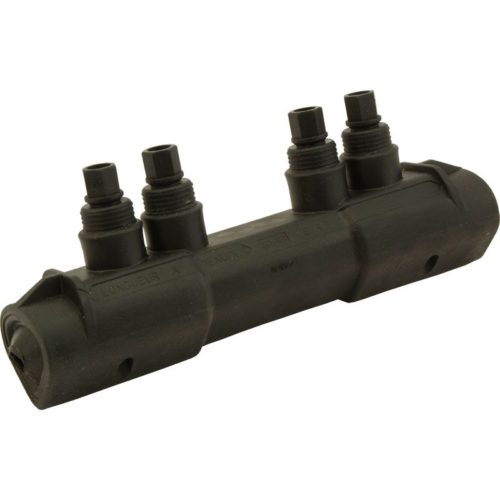
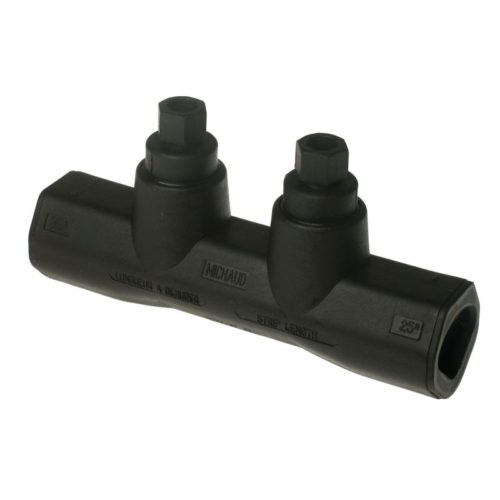 This sleeve is designed to connect aluminium or copper conductors. It does not need the sectoral cores to be rounded before. It is implemented using a 13 or 17mm spanner. The electrical capacity is respectively 240mm² aluminium conductors (K191, K192), 150mm² aluminium or copper conductors (K193) and 95mm² aluminium or copper conductors (K189).
This sleeve is designed to connect aluminium or copper conductors. It does not need the sectoral cores to be rounded before. It is implemented using a 13 or 17mm spanner. The electrical capacity is respectively 240mm² aluminium conductors (K191, K192), 150mm² aluminium or copper conductors (K193) and 95mm² aluminium or copper conductors (K189). -
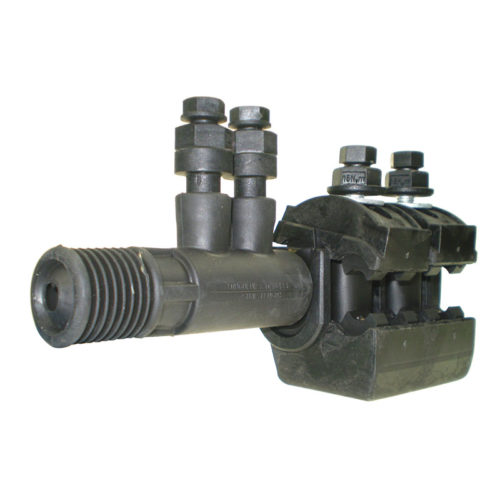
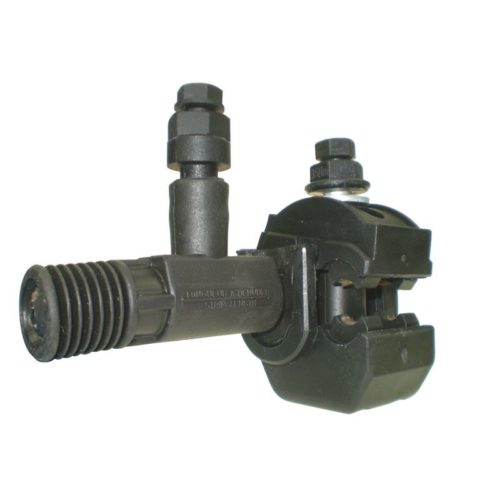 This c onnector is de signed to connect a low voltage A.B.C. (Aerial Bundled Conductors) to another network of the same type or to a low voltage aluminium alloy or copper bare conductors network. In main line, the section of the insulated conductors is from 25 to 150mm² depending on the model, and is from 7 to 120mm² on bare conductors. In tap line, the section of the insulated conductors is from 25 to 70mm² and from 35 to 150mm² depending on the model.
This c onnector is de signed to connect a low voltage A.B.C. (Aerial Bundled Conductors) to another network of the same type or to a low voltage aluminium alloy or copper bare conductors network. In main line, the section of the insulated conductors is from 25 to 150mm² depending on the model, and is from 7 to 120mm² on bare conductors. In tap line, the section of the insulated conductors is from 25 to 70mm² and from 35 to 150mm² depending on the model. -
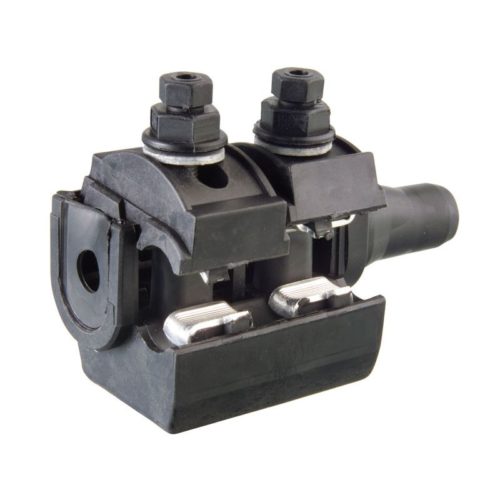
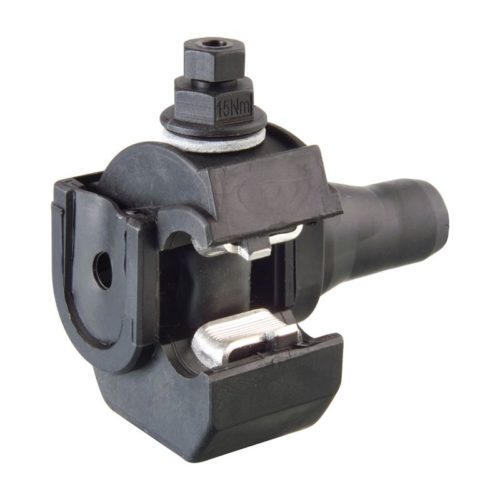 This connector is designed to connect a low voltage A.B.C. (Aerial Bundled Conductors) network to another low voltage aluminium alloy or copper bare conductors network. The section of the bare conductors is from 7 to 240mm² depending on the model. The section of the insulated cables is from 25 to 150mm² depending on the model.
This connector is designed to connect a low voltage A.B.C. (Aerial Bundled Conductors) network to another low voltage aluminium alloy or copper bare conductors network. The section of the bare conductors is from 7 to 240mm² depending on the model. The section of the insulated cables is from 25 to 150mm² depending on the model. -
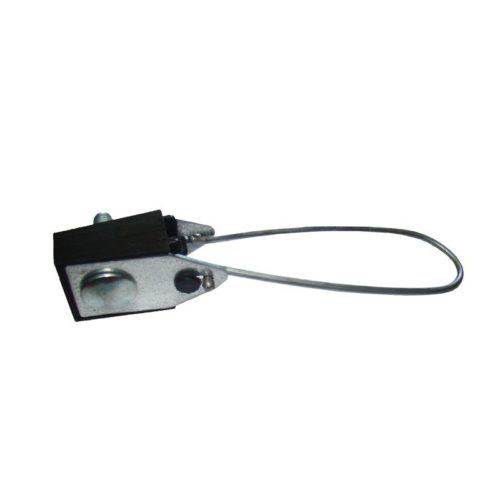
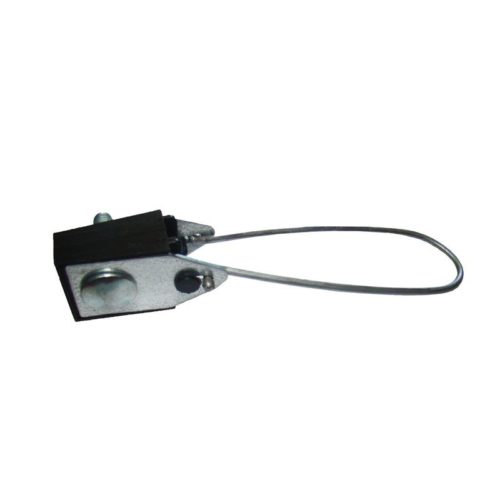 These anchoring and suspension clamps are designed to anchor and to hold the A.B.C. (Aerial Bundled Conductors) network. This range is rather designed to self-supporting cables. The suspension bracket is designed to fix clamps on a pole or a wall. The bracket fixing is performed by straps or screws. The hook is used to fix an anchoring clamp on a pole or a wall. It is implemented once holes are drilled.
These anchoring and suspension clamps are designed to anchor and to hold the A.B.C. (Aerial Bundled Conductors) network. This range is rather designed to self-supporting cables. The suspension bracket is designed to fix clamps on a pole or a wall. The bracket fixing is performed by straps or screws. The hook is used to fix an anchoring clamp on a pole or a wall. It is implemented once holes are drilled. -
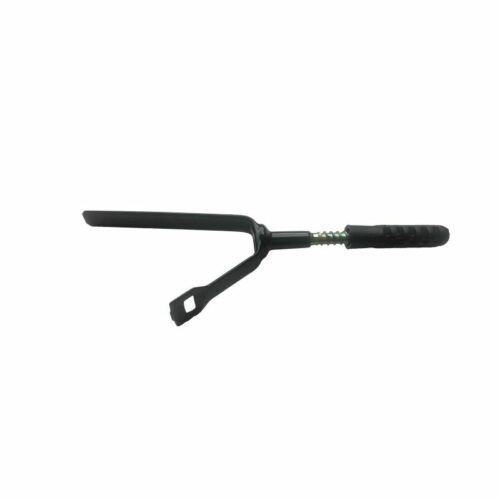
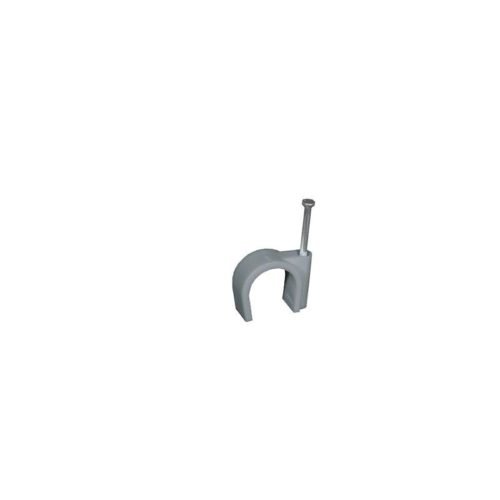 The cable saddle (facade) is designed for fixing the low voltage A.B.C. (Aerial Bundled Conductors) on façades using neutral messenger or fully supported technology. A cable saddle is implemented every 30cm to ensure excellent fixing of the A.B.C. The wall mounting is quick and easy to implement. It is discreet and aesthetic. The cable saddle (pole) is used to fix cable trunking on poles. It is fixed using a strap and it is made of UV protected thermoplastic material. The N733 is sealed with a cable tie for 15 to 30mm diameter cables, the N734 for 30 to 50mm diameter cables, and the N735 for 50 to 90mm cables.
The cable saddle (facade) is designed for fixing the low voltage A.B.C. (Aerial Bundled Conductors) on façades using neutral messenger or fully supported technology. A cable saddle is implemented every 30cm to ensure excellent fixing of the A.B.C. The wall mounting is quick and easy to implement. It is discreet and aesthetic. The cable saddle (pole) is used to fix cable trunking on poles. It is fixed using a strap and it is made of UV protected thermoplastic material. The N733 is sealed with a cable tie for 15 to 30mm diameter cables, the N734 for 30 to 50mm diameter cables, and the N735 for 50 to 90mm cables. -
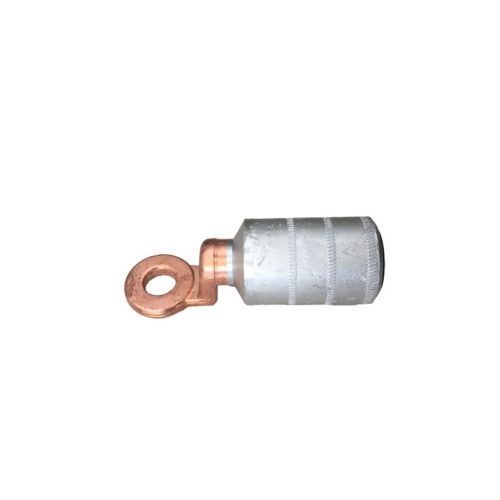
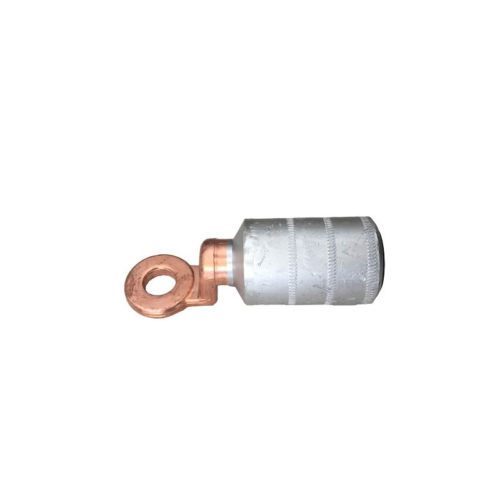 The tubular lug is designed to connect cable. It is made of tinplated copper (by electrolysis). It is manufactured with an inspection hole and socketing. It is implemented with hexagonal compressed connection. It allows copper and aluminium conductors. This lug meets the requirement of the NFC 20-130 standard. The friction welded lug is used to connect aluminium bare conductors to copper equipment terminals. It is used for industrial or indoor applications. This lug is implemented by crimping and out of traction. This lug meets the requirement of the NF C 63-061 standard. The Al/Cu tinned aluminium lug is used to connect aluminium bare conductors to copper equipment terminals. It is applied with a deep crimping.
The tubular lug is designed to connect cable. It is made of tinplated copper (by electrolysis). It is manufactured with an inspection hole and socketing. It is implemented with hexagonal compressed connection. It allows copper and aluminium conductors. This lug meets the requirement of the NFC 20-130 standard. The friction welded lug is used to connect aluminium bare conductors to copper equipment terminals. It is used for industrial or indoor applications. This lug is implemented by crimping and out of traction. This lug meets the requirement of the NF C 63-061 standard. The Al/Cu tinned aluminium lug is used to connect aluminium bare conductors to copper equipment terminals. It is applied with a deep crimping.
